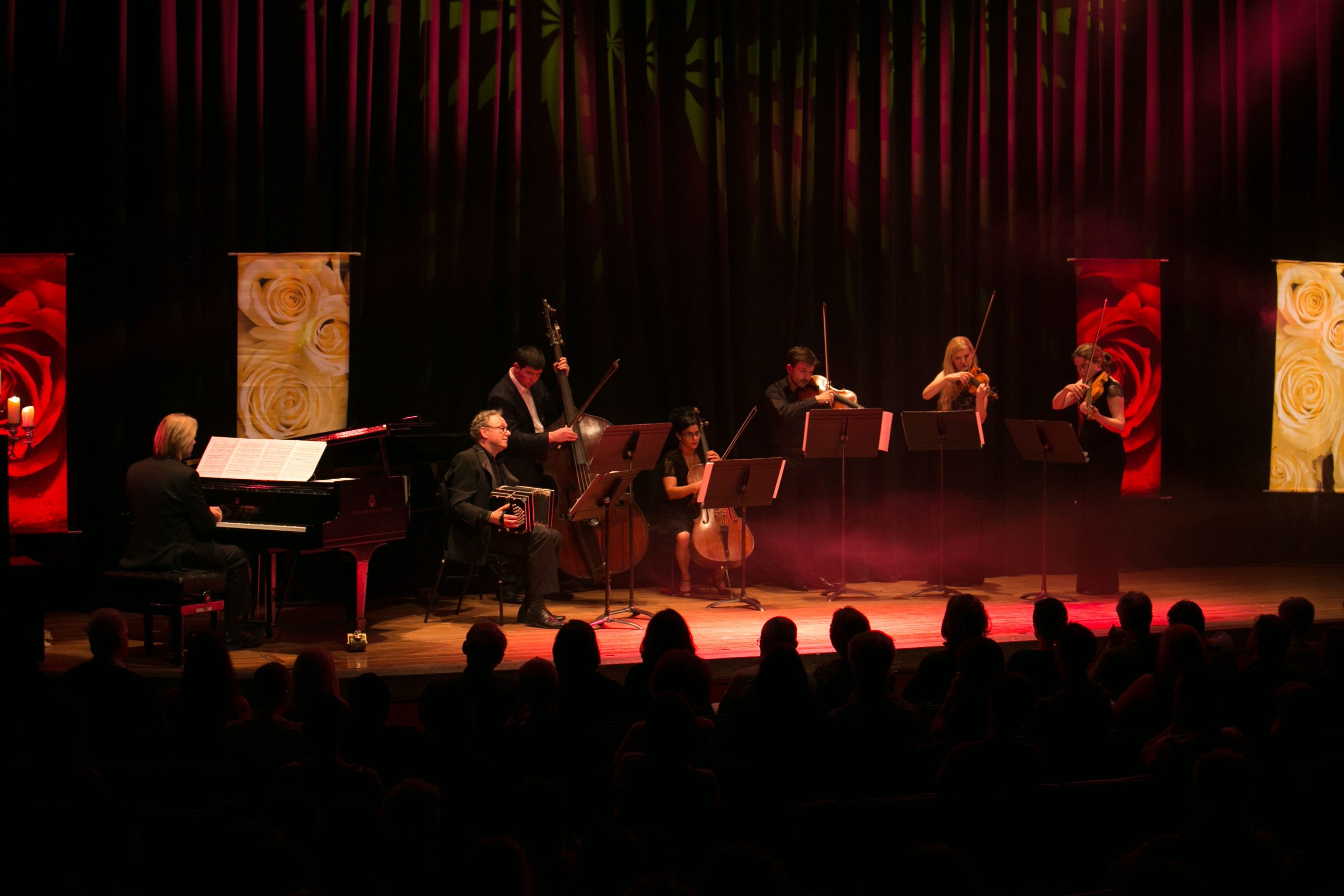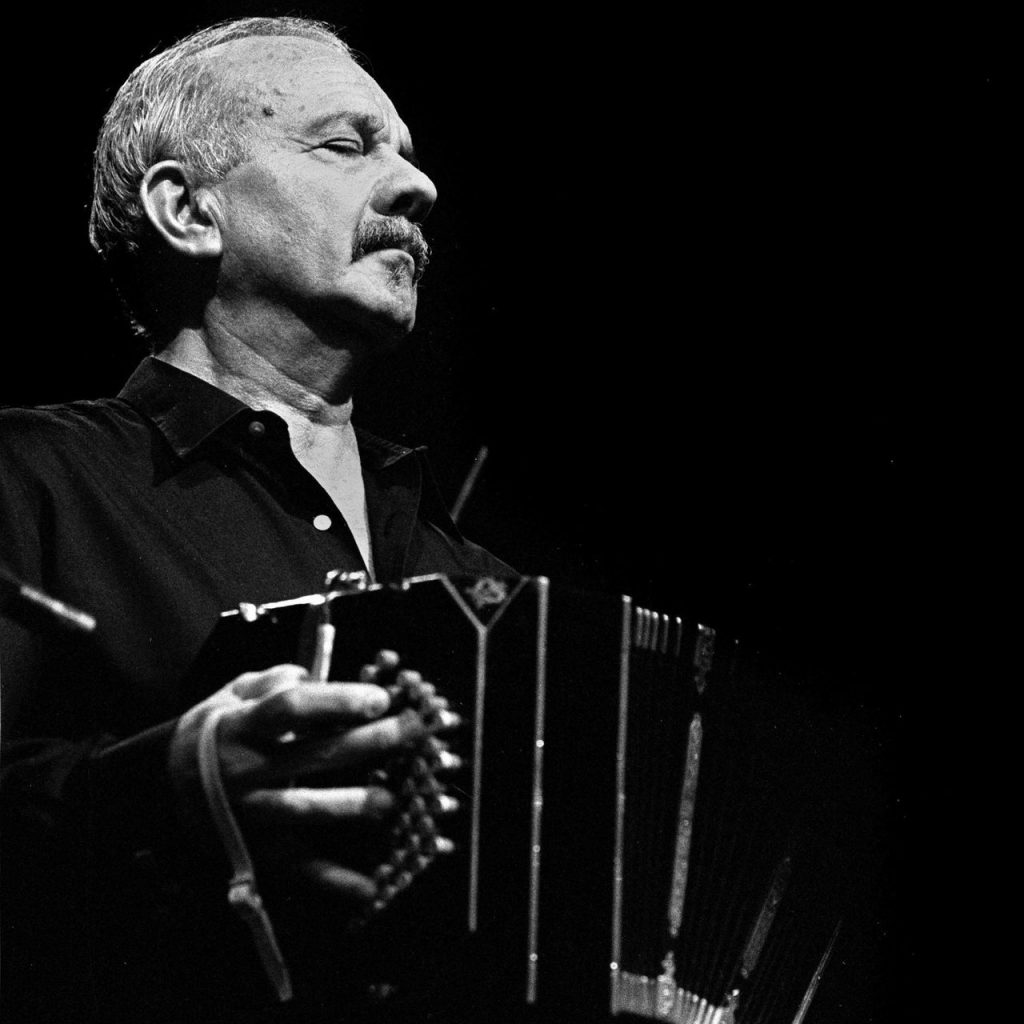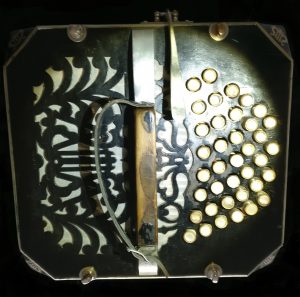Lecture/Recitals and Workshops on Argentinian Tango Music.
Introduction
Tango is a music that straddles Europe, Africa, South America and the Carribean, and its reach and influence is global. More than a music and dance form, its orbit includes literature – poetry, song lyrics, libretto, fiction, and the visual and plastic arts.
What does this mean for musicians?
In Tango: A Music Between Worlds, Julian Rowlands looks at the unique creative processes and performance practises of tango, reflecting a deep knowledge of tango’s more than hundred year history, and its development from the Guardia Viejo via the golden age to the Nuevo Tango of Astor Piazzolla, and the contemporary scene.
Tango is a music that, like jazz, has a canon of standard works that are radically reinterpreted by each performer and ensemble. It has its own unique rhythmic and formal structures. In improvisation and embellishment, tango most closely resembles the music of the baroque, but with some very specific features such as the rhythmic manipulation of melody known as fraseo.
Musicians seeking to perform tango in a stylistically appropriate way face a number of challenges. Good quality performance scores are not available for much tango music. The music of Piazzolla is available in editions that are not of the best quality and lack a lot of information to support stylistic performance. Musicians outside of Argentina often have a limited knowledge of the range of music in the repertoire, perhaps only being familiar with some songs of Gardel and works of Piazzolla in classical arrangements. These workshops are intended to address those challenges. In particular, by in depth coverage of the performance techniques and practises appropriate to traditional tango, which are also entirely relevant to the music of Piazzolla.
Workshop Programme
In the workshops we will look at:
- A history of tango music: key events, people, influences and trends.
- The key forms: tango, vals, milonga, song; classical forms in Piazzolla and later composers.
- How is tango music created? The path from composition to performance.
- Texts and realisation : what published and manuscript scores contain and what they leave to the performer
- The tango canon: key works and notable interpretations.
- Performance practises: the features that distinguish a tango approach.
- From hearing to playing: how does one construct a stylistically appropriate realisation of a tango? We will workshop interpretations of sections of music by Piazzolla and others, using the techniques and approach favoured by Argentinian tango musicians.
- Performance: Participants will have an opportunity to perfom tango pieces. All materials will be provided.
Instrumentation
Which instruments can participate? The earliest tango ensembles comprised some combination of vioin, flute, guitar, piano and double bass. From the 1920s, the traditional tango orchestra consisted of bandoneons, violins, viola, cello, piano, and double bass. Some orchestras also included clarinet, bass clarinet, cornet, vibraphone and harp. Piazzolla continued to use the traditional instruments and sometimes added flute, saxophone, drum kit and synthesizers. In each era the human voice is also an important element of much of the music. From this we can see that any instrument can be used to play tango music. The challenge is to match the capabilities of each instrument to the sound world and sonic vocabulary of the music.



